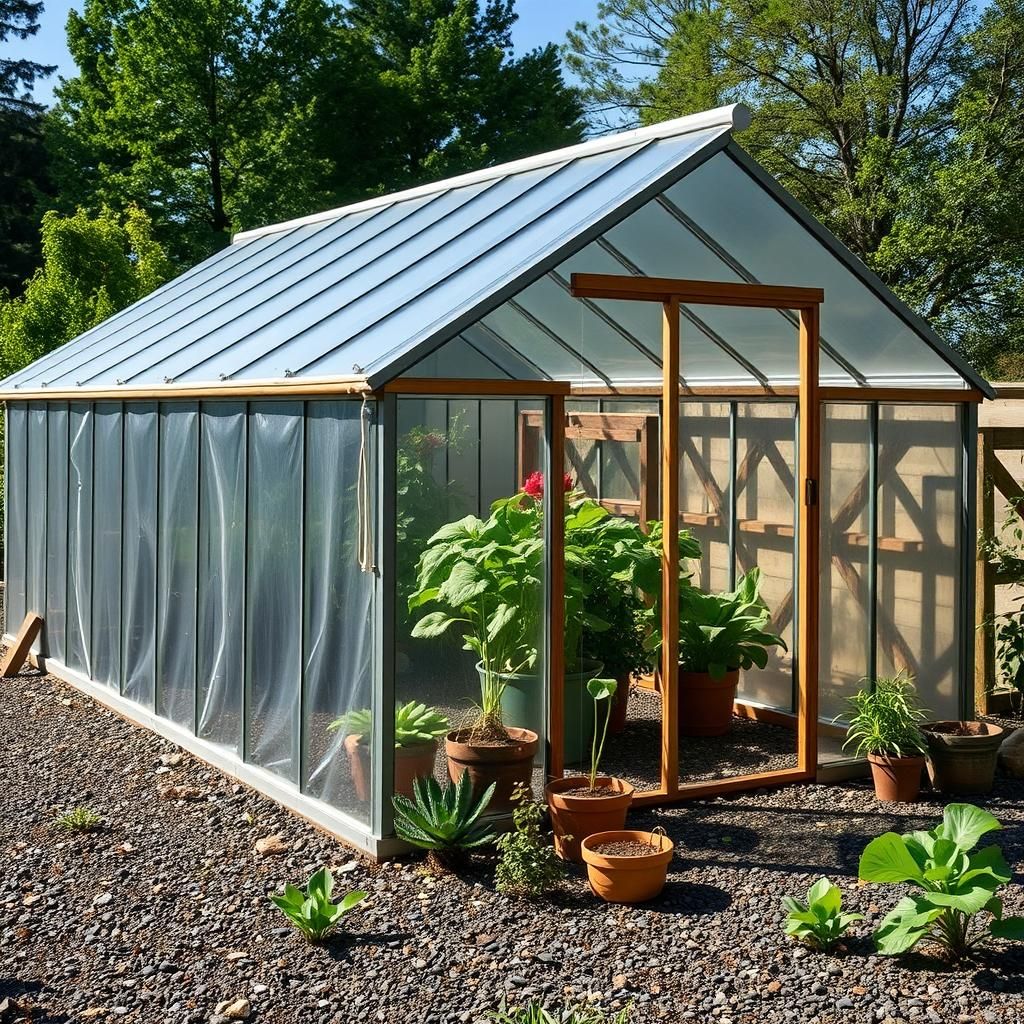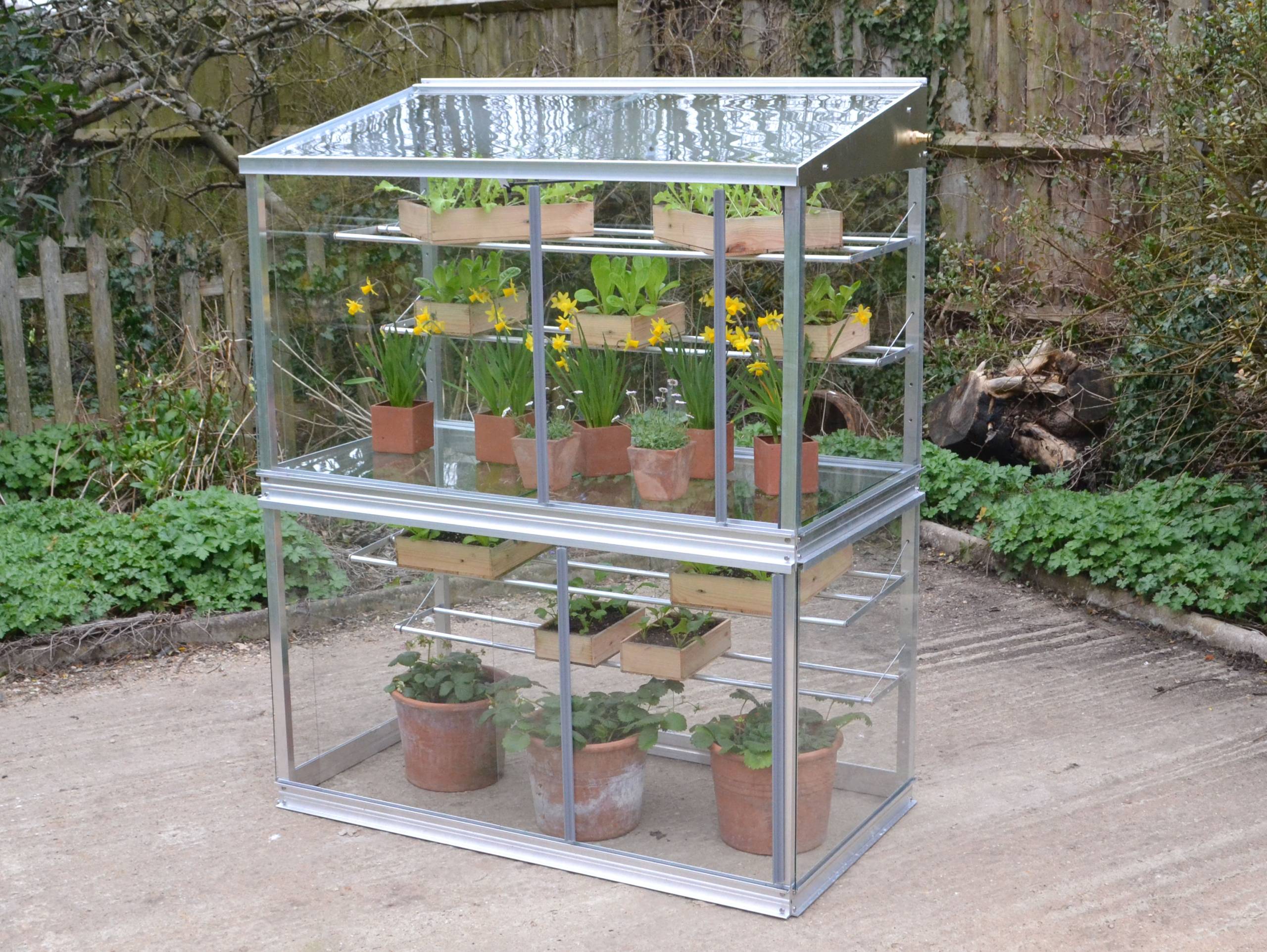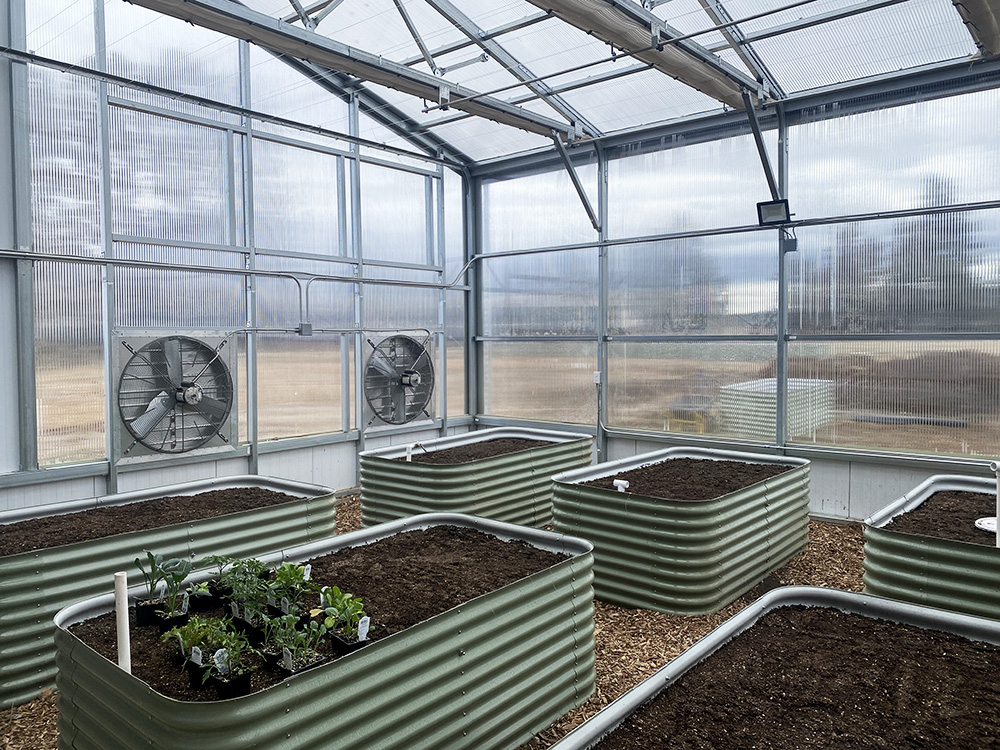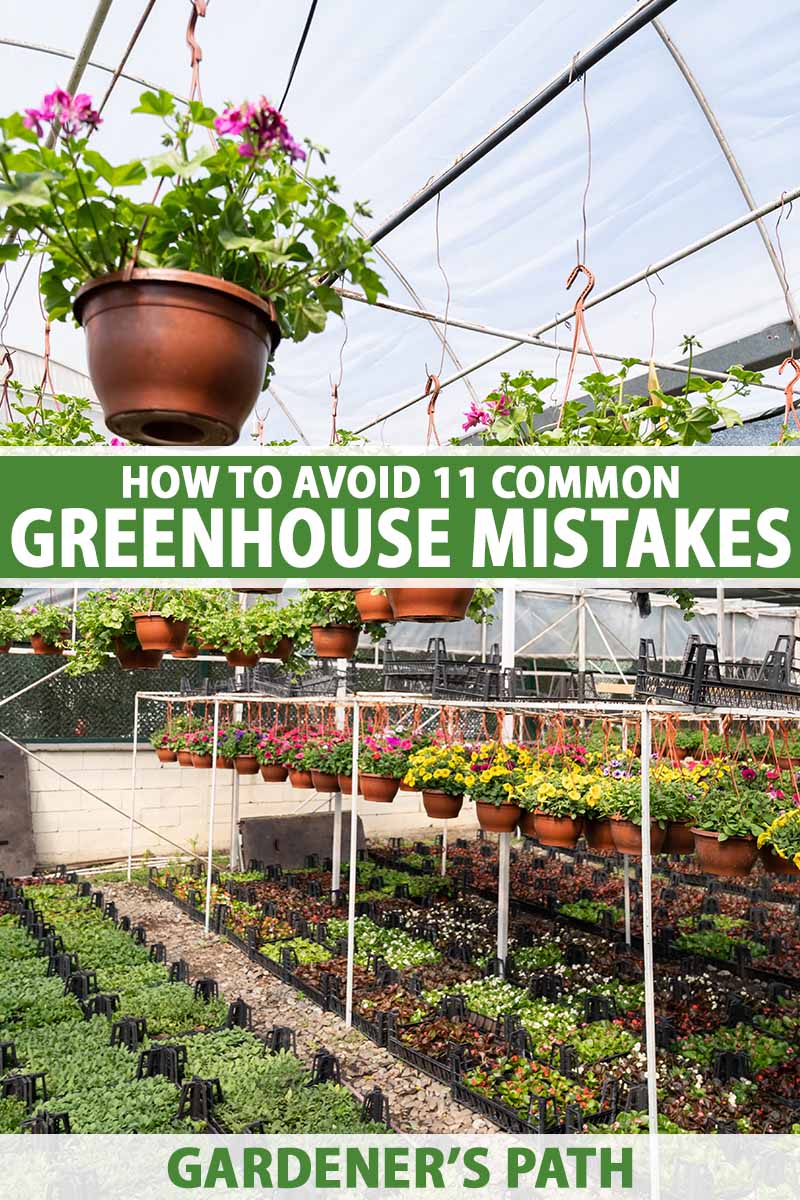Can a Greenhouse Sit on Gravel? Pros, Cons, and Best Practices Explained

When considering the ideal foundation for a greenhouse, many gardeners wonder if placing it on gravel is a viable option. This article will explore the pros and cons of this approach, providing insights into how gravel can impact drainage, stability, and overall plant health. Additionally, we will discuss best practices for constructing a greenhouse on gravel, ensuring that you create an optimal environment for your plants. Whether you’re a seasoned gardener or a novice, understanding the implications of a gravel foundation can help you make informed decisions for your greenhouse project.
Can a Greenhouse Sit on Gravel?
Yes, a greenhouse can successfully sit on gravel, but there are several important factors to consider. Gravel provides excellent drainage, preventing water pooling around the greenhouse, which can lead to structural damage or mold growth. However, the type and size of gravel used are crucial; larger stones may hinder the ability to anchor the greenhouse securely, while smaller gravel can create a stable, level surface. It's also essential to ensure that the gravel base is properly compacted to provide a solid foundation. Additionally, placing a weed barrier underneath can help prevent unwanted vegetation from growing through the gravel, ensuring better maintenance and aesthetics of the greenhouse area.
Advantages of Using Gravel for Greenhouse Foundations
One of the main advantages of using gravel as a foundation for a greenhouse is its superior drainage capabilities. Unlike solid surfaces, gravel allows rainwater to filter down, significantly reducing the likelihood of any water-related issues, such as flooding or soil erosion. This environment is particularly beneficial for plant health, as excess moisture can lead to root rot. Moreover, gravel is relatively easy to install and maintain, allowing for a flexible and cost-effective solution that can be adjusted as needed.
Considerations for Choosing the Right Gravel
When selecting gravel for a greenhouse foundation, it's important to consider specific types, such as pea gravel or crushed stone. Pea gravel is small and smooth, making it easy to walk on and providing a stable surface, while crushed stone is larger and offers better drainage. The size and shape of the gravel impact not only drainage but also how well the ground will support the weight of the greenhouse. Ensure that the gravel is compacted to create a rigid base that can withstand the greenhouse's structure without shifting.
Weed Management Under Gravel
Implementing a weed barrier beneath the gravel is essential for preventing unwanted vegetation from disrupting the greenhouse's environment. Weeds can compete with greenhouse plants for nutrients and water, potentially affecting their growth. A robust weed barrier, made of landscape fabric, can help keep weeds at bay while allowing water to drain through. This practice not only maintains the aesthetic appeal of the area but also reduces maintenance efforts, enabling a more productive gardening experience.
Anchoring a Greenhouse on Gravel
Anchoring a greenhouse effectively on a gravel surface poses unique challenges compared to traditional foundations. It is important to use appropriate anchoring systems designed for loose materials. For example, ground anchors or stakes can be driven deep into the soil beneath the gravel, stabilizing the structure against wind and other external forces. Additionally, using a foundation frame can provide added stability, allowing for the greenhouse to remain secure over time without shifting or toppling.
Potential Drawbacks of a Gravel Foundation
Despite the advantages, there are some drawbacks to consider when using gravel for a greenhouse foundation. One significant concern is that gravel can be unstable, especially if the base is not properly compacted or if the gravel layer is too deep. This instability can lead to shifting over time, causing structural concerns for the greenhouse. Furthermore, if the gravel is not clean or contains contaminants, it may introduce issues such as pests or diseases to the plants. Regular maintenance is necessary to ensure the gravel remains functional and does not create additional labor.
| Aspect | Details |
|---|---|
| Drainage | Excellent; reduces water pooling. |
| Weed Control | Use a weed barrier to prevent unwanted growth. |
| Stability | Ensure proper compaction and anchoring. |
| Type of Gravel | Pea gravel preferred for smoothness; crushed stone for better drainage. |
| Maintenance | Regularly check for shifts and debris. |
Can I put a greenhouse on gravel?

Yes, you can put a greenhouse on gravel, and it is actually a popular choice among many gardeners. Using gravel as a base for a greenhouse has several advantages. Gravel provides good drainage, which is essential for preventing water accumulation around the greenhouse structure. This can help maintain optimal conditions for plant growth and reduce the risk of mold and mildew. However, there are some factors to consider when installing a greenhouse on gravel to ensure stability and effectiveness.
Benefits of Using Gravel for Greenhouse Foundations
Gravel offers multiple benefits as a foundation material for greenhouses, including the following:
- Excellent Drainage: Gravel allows water to drain effectively, preventing waterlogging and reducing the chances of root rot.
- Weed Control: A gravel base can help suppress weed growth, minimizing competition for nutrients and water.
- Cost-Effective: Gravel is generally more affordable compared to other foundation materials such as concrete or asphalt.
How to Prepare Gravel for Greenhouse Installation
Before placing your greenhouse on gravel, it's essential to properly prepare the area to ensure stability and functionality. Preparation steps may include:
- Site Selection: Choose a flat, level area that receives adequate sunlight to maximize greenhouse efficiency.
- Compaction: Compact the gravel base to create a solid surface that can support the weight of the greenhouse.
- Edge Stabilization: Consider using landscape edging to keep the gravel contained and prevent it from spreading.
Possible Drawbacks of Gravel Bases
While gravel has many advantages, there are some drawbacks to consider:
- Instability: Over time, gravel may shift, leading to an unstable greenhouse structure if not properly maintained.
- Uneven Surfaces: If not leveled correctly, gravel can create uneven surfaces, making it challenging to install the greenhouse accurately.
- Pest Attraction: Gravel can attract pests and insects, which may affect the plants inside the greenhouse.
Installation Tips for Greenhouses on Gravel
When installing a greenhouse on gravel, certain tips can help enhance the setup:
See also:
- Use a Ground Cover: Consider adding a weed barrier or landscape fabric under the gravel to prevent weed growth.
- Frame Installation: Ensure the frame of the greenhouse is securely anchored to the ground to prevent shifting.
- Regular Maintenance: Inspect the gravel periodically to check for settling or shifting and replenish as necessary.
Alternatives to Gravel for Greenhouse Foundations
If gravel does not meet your preferences, there are several alternatives for greenhouse foundations:
- Concrete Slab: Provides a solid, stable base and prevents pest infiltration.
- Wooden Frames: Offers a more decorative option, but requires regular treatment to prevent rot.
- Grass or Soil: A natural option, but may require additional drainage solutions to prevent water issues.
What is the best surface to put a greenhouse on?

The best surface to put a greenhouse on plays a crucial role in its overall functionality, durability, and effectiveness in supporting plant growth. Various surfaces offer distinct advantages, and the choice depends on several factors, including location, type of greenhouse, and personal preferences.
1. Concrete Slab
A concrete slab is considered one of the most robust surfaces for installing a greenhouse. It provides a level and durable foundation that can withstand various weather conditions and prevent weed growth.
- Stability: A concrete slab offers excellent stability, ensuring that the greenhouse structures remain intact during strong winds.
- Weed Prevention: The impermeability of concrete makes it very effective at preventing weed growth, reducing maintenance.
- Moisture Control: Concrete can aid in water drainage, preventing water accumulation around the greenhouse base.
2. Gravel Base
A gravel base is another popular option for greenhouse surfaces. It provides excellent drainage, which is beneficial for healthy plant roots and overall greenhouse conditions.
- Drainage: Gravel promotes excellent drainage, preventing waterlogging and allowing excess water to escape easily.
- Weight Distribution: The permeable nature of gravel helps distribute weight evenly, which is essential for larger greenhouses.
- Cost-Effective: Generally, creating a gravel base is less expensive than pouring concrete, making it suitable for budget-conscious gardeners.
3. Wood Decking
Wood decking provides a rustic and aesthetically pleasing surface for greenhouses. It can be a good option if treated adequately to withstand moisture and pests.
- Aesthetic Appeal: Wood decking offers a natural look that can enhance the overall appearance of the garden.
- Insulation: Wood has natural insulating properties, which can help in maintaining the ideal temperatures within the greenhouse.
- Flexibility: Wood allows for easy modifications; you can create a custom layout tailored to your greenhouse needs.
4. Pavers or Bricks
Using pavers or bricks can create a solid and attractive foundation for greenhouses. This option allows for custom designs and can help in maintaining a clean and tidy area.
- Durability: Pavers and bricks offer a long-lasting solution and are less likely to shift or degrade over time compared to softer surfaces.
- Customizability: They come in various shapes and colors, allowing for personalized designs that can complement existing landscapes.
- Ease of Maintenance: Hard surfaces like pavers can make it easier to keep your greenhouse area clean and free of debris.
5. Turf or Grass
Though less common, some gardeners opt to place their greenhouses on turf or grass. This choice can be environmentally friendly and beneficial depending on climate and usage.
- Natural Environment: Grass can create a natural feel, blending the greenhouse into its surroundings.
- Cooling Effect: Grass offers a cooling effect, which can help in keeping the greenhouse temperature lower during hot days.
- Soil Health: A grass surface can improve soil health and encourage beneficial insect activity in the surrounding area.
What is the best floor for a greenhouse?

The best floor for a greenhouse largely depends on various factors like the type of plants being grown, local climate, and maintenance preferences. Here are some common options, along with their advantages and disadvantages.
Choosing the Right Material
Selecting the appropriate material for the floor is crucial. Options include concrete, gravel, wood, and tiles, each presenting unique benefits.
- Concrete: Durable and easy to clean, but can retain moisture if not properly sloped.
- Gravel: Excellent drainage and natural pest deterrence. Yet, weeds may emerge more easily.
- Wood: Aesthetic and organic, but can rot over time if not treated.
- Tiles: Easy to maintain and visually appealing, though potentially slippery when wet.
Drainage Considerations
Good drainage is essential for healthy plant growth. The chosen floor material affects how well water drains, impacting root health and soil quality.
- Gravity Flow: Floors like concrete must be sloped to allow water to flow away effectively.
- Permeable Surfaces: Gravel allows for natural drainage, reducing puddles and excess humidity.
- Drainage Systems: Additional drainage solutions, such as pipes or trenches, can be integrated into most floors.
Insulation and Temperature Control
The floor of a greenhouse plays a role in maintaining temperature, especially during cold spells. Insulation helps protect delicate plants.
See also:
- Thermal Mass: Concrete can retain heat during the day and release it at night, benefiting warm-season crops.
- Insulating Materials: When combined with other materials, like mulch over a wooden floor, can help retain warmth.
- Floor Heating Systems: Some greenhouses employ heated floors for temperature control, particularly in colder climates.
Pest Control
A well-chosen floor can help in managing pests and diseases, which is vital for a productive greenhouse environment.
- Non-Organic Materials: Concrete and tiles can prevent soil-borne pests from infiltrating the greenhouse.
- Natural Deterrents: Gravel and certain organic floors can encourage beneficial insects and deter harmful ones.
- Weed Management: Proper flooring options can limit weed growth, which competes with plants for nutrients.
Maintenance and Cost
Maintenance requirements and initial setup costs determine the long-term viability of the greenhouse floor.
- Initial Investment: Concrete may have a higher upfront cost but can last for many years with minimal upkeep.
- Cleaning Ease: Smooth surfaces like tiles and concrete can be easier to clean than porous materials.
- Long-Term Durability: Investing in durable materials often reduces the need for future repairs or replacements.
Where not to put a greenhouse?

When considering the ideal location for a greenhouse, certain areas should be avoided to ensure optimal growth conditions for plants. Here are key insights into places where you should not place a greenhouse:
Areas with Unstable Foundations
Placing a greenhouse on unstable or uneven ground can lead to significant issues over time. Uneven surfaces can cause stress on the structure, leading to potential collapse or damage. Additionally, water may pool in low areas, promoting root rot or affecting soil quality.
- Flood-prone zones: Areas that often experience flooding should be avoided to prevent waterlogging.
- Sloped land: Choose level ground to maintain structural integrity and proper water drainage.
- Rocky or hard soils: These make it difficult to install foundations and can impede plant growth.
Excessively Shaded Locations
A greenhouse should be placed in a location that receives ample natural sunlight. Areas with excessive shade from trees, buildings, or fences can hinder plant growth, leading to poor yields and unhealthy plants.
- Trees: Tall trees can block sunlight; consider future growth when evaluating locations.
- Buildings: Nearby structures may cast shadows and reduce light exposure during crucial growth periods.
- Fences: If a fence is tall or located too close to the greenhouse, it can restrict light access.
High Wind Areas
Wind can be detrimental to a greenhouse's structure and the plants inside. Locating a greenhouse in windy areas can result in broken glass, damaged frames, and even uprooted plants.
- Open fields: Areas exposed to strong winds may require additional support structures, increasing costs.
- Coastal regions: Wind from the sea can be particularly harsh, necessitating robust design features.
- Valleys: Winds can funnel through valleys, increasing turbulence around the greenhouse.
Near Pest Sources
Placing a greenhouse too close to pest sources can lead to infestations that are difficult to control. Proximity to areas where pests thrive can negate the benefits of a controlled environment.
- Compost piles: These can attract rodents and insects that may invade the greenhouse.
- Wooded areas: Tress and underbrush harbor pests and may increase insect activity in your greenhouse.
- Agricultural fields: Fields with crops can serve as sources of pests that may quickly infiltrate your greenhouse.
Areas with Poor Drainage
Greenhouses should ideally be located in areas with good drainage. Poor drainage can lead to issues such as water accumulation, which fosters root diseases and hinders plant health.
- Low-lying areas: Placement in these locations can lead to flooding, especially after heavy rain.
- Clay soils: These retain water and may not drain well, creating damp growing conditions.
- Regionally saturated zones: Avoid places where groundwater levels are consistently high, as they can affect plant roots.
Questions from Our Readers
Can a greenhouse sit on gravel?
Yes, a greenhouse can sit on gravel. However, it's important to ensure that the gravel provides a stable base and allows for adequate drainage. A proper foundation will help prevent water pooling and promote a healthier environment for your plants.
What are the benefits of placing a greenhouse on gravel?
Placing a greenhouse on gravel offers several advantages, including improved drainage, reduced weed growth, and easier access for maintenance. The gravel surface can also help with temperature regulation within the greenhouse as it absorbs heat during the day and releases it at night.
Do I need to prepare the gravel before placing the greenhouse?
Yes, it is advisable to prepare the gravel before placing the greenhouse. Ensure that the area is level, compacted, and free from large stones or debris. This preparation will create a more stable and even surface for the greenhouse, reducing the risk of future structural issues.
Can I use other materials besides gravel for a greenhouse foundation?
Absolutely, you can use other materials such as concrete, wood, or paver stones for a greenhouse foundation. Each option has its own set of advantages and disadvantages, so it's essential to consider factors like drainage, cost, and desired aesthetics when making your choice.
See also:

If you want to read more articles like Can a Greenhouse Sit on Gravel? Pros, Cons, and Best Practices Explained, we recommend you check out our Greenhouse category.
Leave a Reply
Related Articles